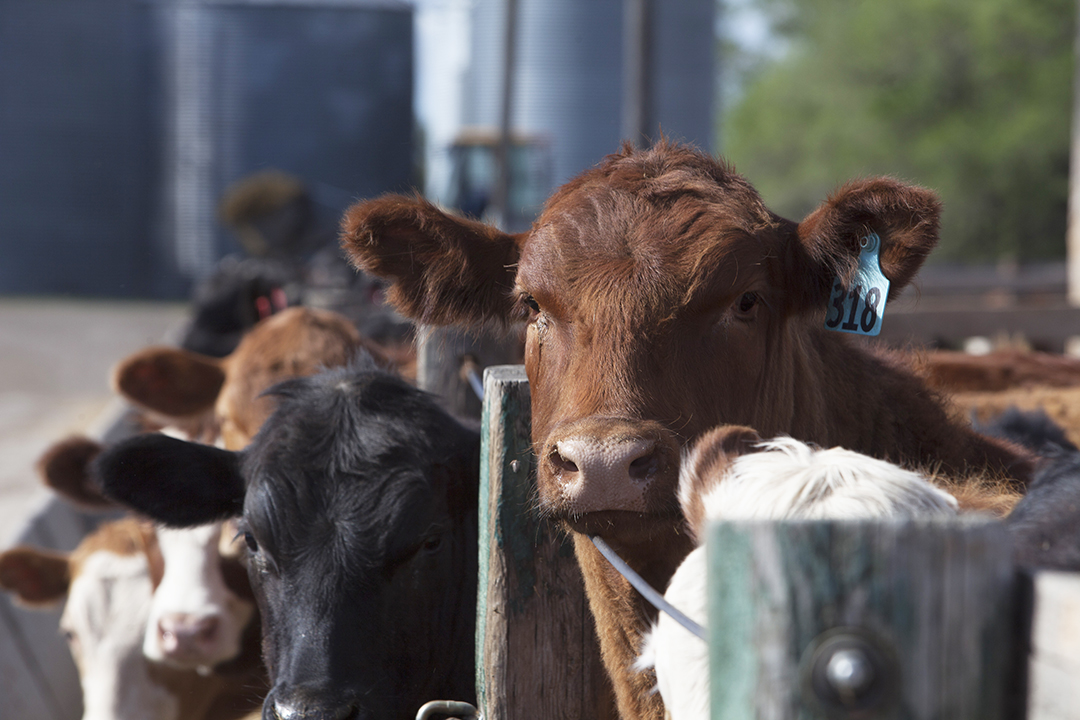
Toe tip necrosis painful problem among feedlot cattle
Toe tip necrosis syndrome (TTNS), a painful disease that mainly affects the hind feet of cattle, was once thought to be a rare occurrence in North American feedlots.
By Harrison BrooksBut based on recent studies conducted at the Western College of Veterinary Medicine (WCVM), researchers now know that TTNS is a prevalent lameness issue in Canadian and American feedlots.
“I think up until five or six years ago, people didn’t really appreciate how prevalent it was. When I first started looking, I suspect many people thought it was a rare disease to be investigating,’” says Dr. Murray Jelinski, a WCVM researcher and professor. He’s also the college’s Alberta Chair in Beef Cattle Health and Production Medicine.
“But as you talk to veterinarians and get them to start looking for cases, it’s actually quite a bit more prevalent than you think.”
Jelinski adds that TTNS cases have been under-reported for so many years because of the lack of a clearly-defined name for the disease. In published research, scientists regularly refer to TTNS by different names such as toe necrosis, toe ulcers and toe abscesses.
TTNS develops when the hind hoofs of cattle become worn down and separation occurs in the white line juncture between the sole and hoof wall. When the white line separates, bacteria can penetrate in to the hoof and cause infection in the bone at the toe’s tip — the third phalangeal or P3 (also called the coffin bone).
Underneath the hoof wall is the sensitive dermis that contains blood and nerves. Once the area is inflamed within the hard hoof wall, the pressure builds and it’s very painful for the animal to walk.
In a WCVM study that was published in the March 2017 issue of Canadian Veterinary Journal (CVJ), researchers collected 222 hoof samples from feedlot cattle that had died of TTNS or from other causes. On average, they found that feet affected by TTNS had hoof walls that were about 21 per cent thinner than hoof walls in non-infected feet. The TTNS-affected feet were also 7.3 times more likely to yield growths of two bacteria species — Escherichia coli and Trueperella pyogenes.
According to Jelinski, the disease happens sporadically and is often found in clusters due to multiple factors being present at one time. Factors that can lead to TTNS are abrasive flooring, excitable cattle, wet conditions and diet.
As Jelinski explains, an energetic feedlot animal will move more aggressively than a calm animal, frequently pushing on the animals ahead of them in the chute system. This causes the animal’s hind feet to slip more often and can lead to more wear on their hoofs.
In some cases, preventive measures taken by feedlot owners can make footing even worse under certain conditions.
“Sometimes [feedlot operators will] etch their concrete with deep grooves that are quite sharp, or they’ll put down expanded metal mesh that’s almost like a cheese grater,” says Jelinski. “It’s great if [the animals] are calm, then they get good traction — but it’s just absolutely horrible on them if their feet become rasped by the flooring.”
Wet conditions and certain nutritional factors could lead to the animals having softer hoofs and a higher likelihood of wearing on their feet.
In another WCVM study, researchers reported that TTNS-affected animals are more likely to have a deficiency in magnesium, a mineral which has an impact on hoof hardness. This result was recently published in the March 2018 issue of CVJ.
“You need to have this constellation of factors all coming to create a disease, so what you tend to see is a group of cattle arriving [that] might be more prone to the disease than all the other ones,” says Jelinski. “You get this clustering of the disease [cases], but you can go for months and never see the disease.”
If the disease is detected at an early stage, veterinarians can treat it aggressively with antibiotics. In some cases, amputation of an infected hoof claw is also possible without affecting the animal’s mobility. However, many large feedlots are not set up to perform claw amputations. If the disease has progressed to the point of reaching the coffin bone, then euthanasia may be the only option.
According to Jelinski, the best option for preventing this disease is to change the flooring of feedlots that have had previous problems with TTNS. He and J.D. Johnston, a professor of mechanical engineering at the U of S College of Engineering, are applying for funding to evaluate possible alternatives for feedlot flooring.
“You have to have a balance between providing enough grip but not being too abrasive,” says Jelinski. “The next step in our research is looking at different types of flooring and … the whole coefficient of friction — what is the point where it starts wearing down the feet versus them [the cattle] getting enough traction?”
Once the researchers can recommend viable options for flooring, Jelinski believes feedlot operators will be willing to make the necessary changes.
“I think if people have a problem with [TTNS], they will find a solution to it. People don’t like to see lame cattle,” says Jelinski. “Healthy animals are more productive animals.”
Harrison Brooks of Fort Qu’Appelle, Sask., is a third-year student at the University of Regina’s School of Journalism. Brooks is the WCVM’s summer research communications intern.
